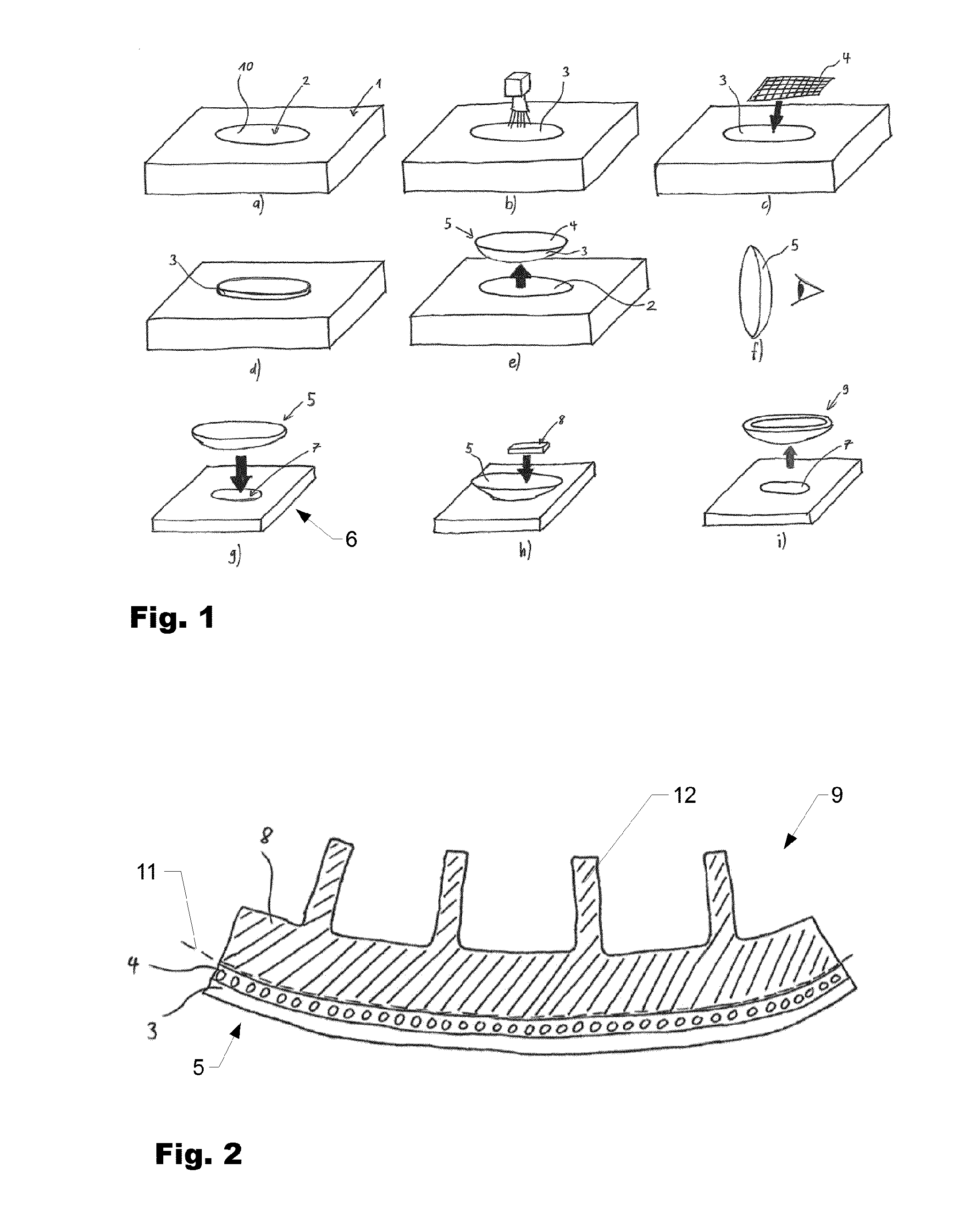Method for producing components from fiber-reinforced composite material
- Summary
- Abstract
- Description
- Claims
- Application Information
AI Technical Summary
Benefits of technology
Problems solved by technology
Method used
Image
Examples
Embodiment Construction
[0034]A method according to the invention is explained in more detail with reference to FIG. 1. Put simply, the method according to the invention shown comprises the following method steps: in a first step (cf. FIG. 1a) a molding tool 1 having a cavity 2 is provided. The cavity 2 has a shaping wall 10.
[0035]If required, as shown in FIG. 1b, a surface layer 3 is applied to the wall 10 (or to parts thereof), so that said surface adheres temporarily to said wall. Depending on the embodiment, a plurality of plies of surface layers may even be applied. The one or more surface layers 3 may consist, for example in their raw state, of a liquid and / or a powder and / or a film. Generally speaking, these reach their desired properties only as a result of processing. In one embodiment, the surface layer 3 is treated by the action of electromagnetic waves prior to application of a first ply of fibers. In particular, provision is made for the use of radiation at wavelengths in the infrared or ultra...
PUM
| Property | Measurement | Unit |
|---|---|---|
| Color | aaaaa | aaaaa |
| Structure | aaaaa | aaaaa |
| Adhesion strength | aaaaa | aaaaa |
Abstract
Description
Claims
Application Information
 Login to View More
Login to View More - R&D
- Intellectual Property
- Life Sciences
- Materials
- Tech Scout
- Unparalleled Data Quality
- Higher Quality Content
- 60% Fewer Hallucinations
Browse by: Latest US Patents, China's latest patents, Technical Efficacy Thesaurus, Application Domain, Technology Topic, Popular Technical Reports.
© 2025 PatSnap. All rights reserved.Legal|Privacy policy|Modern Slavery Act Transparency Statement|Sitemap|About US| Contact US: help@patsnap.com


